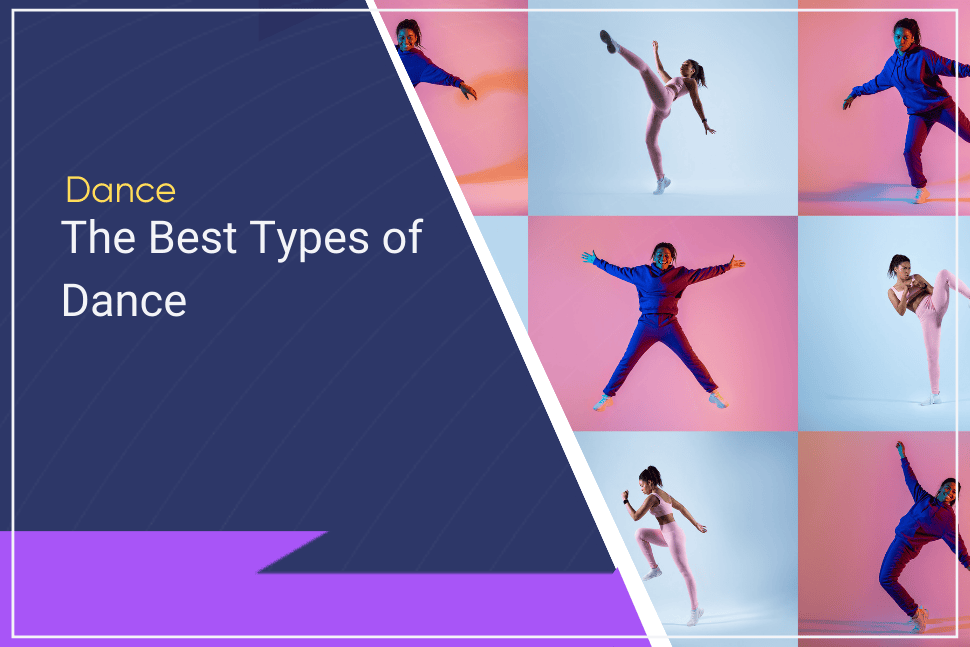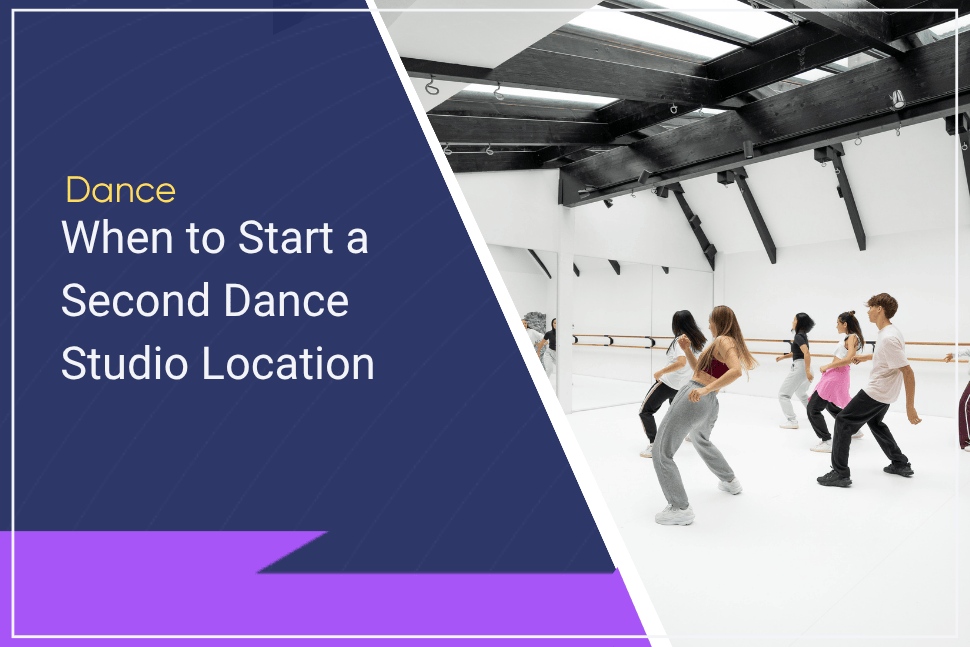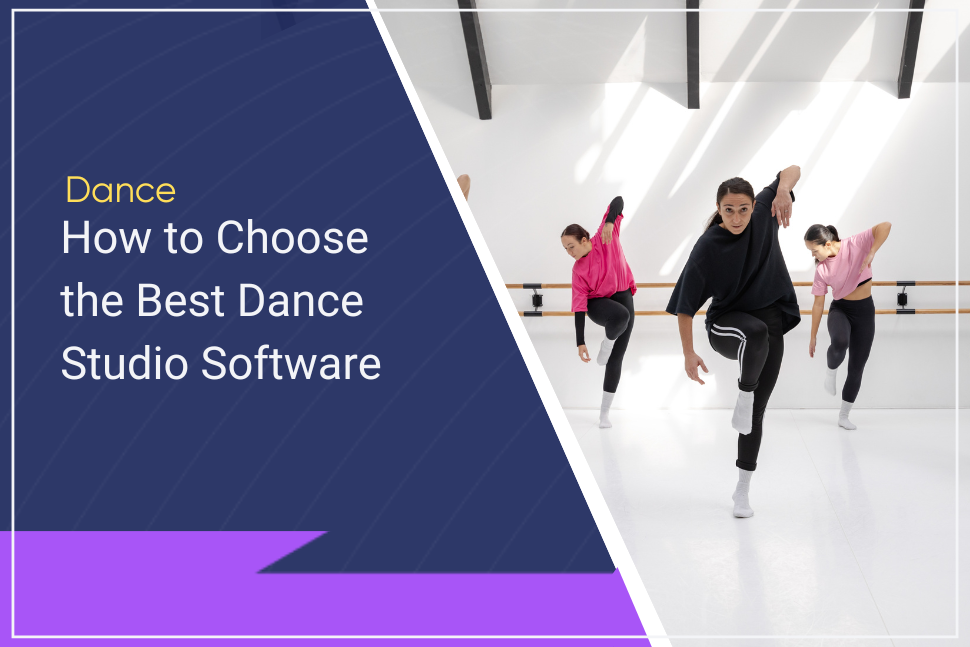Which types of dance are best?
Let’s be more specific: how do you find the type of dance that’s best for you? Is it all about the style that interests you the most? Do you focus on availability? Or do you focus your attention on the styles that best fit your goals or personal circumstances?
The short answer? All of the above.
Today, we’ll take a comprehensive look at dance styles—you’ll come away with a clear sense of (a.) the genres of dance and what’s available, (b.) what to expect from each genre, and (c.) the important elements of each style of dance.
The Genres and Styles of Dance
Most dance styles fit into one of six buckets.
- Traditional
- Modern
- Street and Social
- Folk and Cultural
- Performance and Fusion
- Other Styles
Let’s take a closer look at these categories and the styles of dance in each of these.
Traditional Dance Styles
Traditional dance styles were originally tied to a specific locale. They had deep roots, special meaning, and cultural significance. However, these styles have transcended their countries of origin and are now practiced all over the world.
Ballet: Best for those who are flexible, strong, and technically-minded
Ballet is a traditional, performative, highly technical dance style known globally. It originated in the fifteenth century during the Italian Renaissance and eventually spread to France and Russia, where it evolved into a form of concert dance.
Ballet has a rich and established history that’s complex. It has its own:
- Language: Terms like Arabesque, Plié, Pirouette, and Tendu are all terms used to describe the complex series of steps and movements in ballet.
- Subgenres: These include—classic, contemporary, neoclassical, and romantic. Each subgenre focuses on different techniques, themes, movements, and emphasis.
- Methodologies: Six recognized core methodologies exist: Balanchine, Bournonville, Cecchetti, French, Vaganova, and the Royal Academy of Dance (RAD). While each method has its own unique style and techniques, all focus on areas considered “core ballet techniques.”
What makes ballet so special?
Ballet is a foundational dance style. Most other forms of dance training borrow from it, using its movements, techniques, terminology, and structure. Ballet focuses on technical precision and rigorous movement and strictly adheres to beauty, form, fluidity, and grace.
Ballet: Classroom expectations
When you get started with ballet, you should expect a structured class format that includes:
- Barre exercises for balance
- Techniques and movement in the center of the room
- Floor work, with traveling steps
- Cooldown with stretches and techniques
- Instruction in basic positions (plié, tendu, and relevé) and arm movements (port de bras)
- Progressions to more complex movements and techniques—dancing en pointe, jumps, and turns
New students will wear ballet shoes until their feet have developed the strength needed to progress to pointe shoes. Ballet schools teach students about timing and musicality. Students learn how to observe and synchronize their movements with the rhythm and timing of the music. As expected, teachers provide students with the demonstrations, corrections, and guidance needed to improve.
Ballroom Dance: Best for those looking to partner up
Ballroom dance began at the end of the 16th century. Jehan Tabourot, who wrote under the pen name Thoinot-Arbeau, published Orchésographie, a study of late 16th-century French Renaissance social dance.
Ballroom dancing is a recreational term for a variety of dances. Historically, it was for the privileged but achieved international appeal; it has since grown to include the Waltz, Polka, Mazurka, and Schottische. Formally, ballroom dancing refers to the style of dance recognized by two schools: The International School and The American School. These schools recognize a few dances.
- The International School recognizes five styles in both their Standard and Latin categories. For the Standard Category, they recognize The International Waltz, International Tango, International Viennese Waltz, International Slow Foxtrot, and International Quickstep. For the Latin Category, they recognize International Cha Cha, International Jive, International Paso Doble, International Rumba, and International Samba.
- The American School recognizes nine styles in its Smooth and Rhythm categories. The Smooth Category includes the American Foxtrot, American Tango, American Waltz, and American Viennese Waltz. The Rhythm Category includes the American Bolero, American Cha Cha, American East Coast Swing (similar to International Jive), American Mambo, and American Rumba.
What makes ballroom dance so special?
Ballroom dance is a style designed for partners, typically male and female. Due to its emphasis on entertainment and performance, it’s enjoyed both socially and competitively. Ballroom dancing in a competitive setting tends to be more formal, with dancers judged on diverse criteria: poise, hold or frame, posture, musicality, expression, timing, body alignment, shape, footwork, and presentation.
Ballroom Dance: Classroom expectations
When you get started with ballroom dancing, you should expect the following:
- You’ll work closely with a partner
- Close physical contact. It’s important to keep this in mind, especially if you’re attending class solo
- Physicality required. You’ll be moving vigorously for a long period of time
- Learning steps and techniques. Your instructor will provide you with must-have steps and techniques that are appropriate for your level and skill
- Frequent progress checks. Your instructor will check in frequently to have you demonstrate steps and verify your progress
It’s a good idea to wear workout clothes and bring hydration. You’ll be moving and working for 30 minutes to one hour, and it’s important that you’re comfortable.
Modern and Contemporary Dance: Best for the open-minded in search of self-expression
Modern and Contemporary dance are inspired by various genres and influences. They focus on autonomy and emotional expression through movement. This genre is raw and explores the dancer’s relationship to the floor. It is also more fluid, blending various styles, such as Ballet and jazz, into a cohesive whole.
Modern dance owes its success to contrarian pioneers who each contributed significantly to this genre.
- Isadora Duncan was a contrarian; her life was filled with tragedy and genius. Born in 1877, she drew inspiration from the classical Greek arts, folk dances, social dances, and natural forces. She would integrate new approaches. She turned to American athleticism—skipping, running, jumping, leaping, and tossing.
- Ruth St. Denis was an American pioneer of Modern dance. She introduced Eastern styles and ideas into the genre and paved the way for women in dance. She borrowed heavily from the exotic gestures and ethnic dances of the day, incorporating these ideas into her Denishawn School of Dance. She was a proponent of spiritual dance and the mysticism of the body.
- Many consider Martha Graham the “Mother of Modern Dance.” She went on to create her own style, the Graham technique, a modern dance movement style, and pedagogy. Her technique focused on breathing, contractions, and muscle release.
- Merce Cunningham, through his dance company, pushed modern dance forward for more than 50 years. He earned some of the highest honors in the art: the National Medal of the Arts, the MacArthur Fellowship, Japan’s Praemium Imperiale, a British Laurence Olivier Award, and more than 63 other awards and honors. He frequently collaborated with artists, visual designers, architects, and musicians, relying on them as sources of inspiration.
- Lester Horton drew his inspiration from American Indians, including the Iroquois, Ojibwa, and Penobscot tribes and the Red River Indians. He was a trained Danseur (ballet dancer) and was heavily influenced by Ruth St. Denis’ Denishawn School of Dance.
- José Limón was a dancer and choreographer from Mexico who created the Limón technique, a masculine movement style that aimed to establish the importance of men in dance. In his style, Limón explored themes discussed by religion, history, and literature.
Modern dance is a multidisciplinary discipline that draws inspiration from the arts, culture, spirituality, and design. It’s a broad genre that emphasizes freedom and expression. Modern dance became popular due to the cultural changes that took place in Western culture starting in the late 1900s.
Modern and Contemporary Dance: Classroom expectations
If you attend a modern/contemporary dance class, you should expect:
- Dancing to be barefoot (dance paws for recreational studios)
- Modern dance follows a mix of styles (e.g., Graham, Horton, Limón), which may include one or more of these styles
- With contemporary dance, there is no methodology. Sessions are based on the instructor, their choreography, and dance vocabulary
- A significant amount of carryover from ballet (which may be necessary for continued growth)
- Physicality and lots of movement. Jumps, slides, shifts, swings, and even handstands are all standard for this genre
As I mentioned previously, modern dance is less about formal training and technical ability and more about self-expression. If you’re looking for a dance style that facilitates that and helps you convey your internal experience, modern/contemporary dance may be a good fit.
Street and Social Dance
Street dancing is a catch-all term for social dance styles, including hip-hop, jazz dance, breakdancing, popping, and locking. These styles are oriented around social interaction and entertainment. Street dancing is considered a Vernacular dance style. These dance styles develop organically as a part of daily life in a particular culture or community. These dances are spread informally, person-to-person, instead of dance styles that require formal instruction.
Hip-Hop: Best for dancers searching for authenticity and community
Hip-hop dancing is oriented around, you guessed it, hip-hop music and culture. In the early 1970s, TV shows like Soul Train hosted freestyle dance competitions or “battles.” East and West Coast dance crews got the chance to showcase their talents, earn recognition, and gain mainstream exposure for their style.
Hip-hop has undergone a split. On the one hand, the genre has been commercialized by formally trained dancers and studios. On the other hand, hip-hop continues to be practiced in outdoor spaces and cultural enclaves. Both facets of hip-hop dancing are oriented around a culture and community. Unspoken elements (e.g., swagger, attitude, style, and social elements) impact success with this style.
In an interview with The Bronx Journal, choreographer Safi Thomas said:
“In a lot of studios what you find is people just doing movement to hip-hop music. So if there’s hip-hop music in the background, and they’re moving, they’re calling it a hip-hop class. The problem with that is let’s say I wanted to teach a ballet class and I just come in, and I throw on Mozart, and I just start moving—and I’m not doing any of the foundational elements. I am not doing any of the movement vocabulary of ballet. I can not call that a ballet class and that’s what happens in relation to hip-hop… within the studio realm there is no standard for the art form, and [the teachers] don’t know what the foundational elements of the art are. They know nothing about popping, nothing about locking, nothing about boogaloo, breaking, or the hip-hop dance—the social dances—or any of that. They know none of the history which spans over 30–35 years, and so they pretty much cut off any type of edification that a dancer can have.”
As a dance genre, hip-hop leans heavily into culture and relies on authenticity. Hip-hop dance includes breakdancing, locking, popping, roboting, and the boogaloo. It continues to evolve, spawning styles like Memphis Jookin’, Turfing, Jerkin’, and Krumping.
Hip Hop Dance: Classroom expectations
Plan on attending a hip-hop dance class? You should:
- Wear street attire, comfortable clothing, and gym shoes
- Expect a heavy emphasis on authenticity from bonafide instructors
- Expect techniques and movements to have a strong emphasis on attitude and expression
- Work to understand the dance style’s unique energy and flow
- Be prepared to improvise within the confines of the class structure
- Embrace the expressive and energetic nature of this dance style
Jazz Dance: Best for dancers who want freedom and technical precision
Jazz dance is a performance style that originated in the early 17th century and became recognized in the early 20th century. As both genres grew in popularity, jazz dance evolved alongside jazz music. Jazz dance is divided into two main sub-genres: Vernacular Jazz and Dramatic Jazz.
- Vernacular Jazz refers to the dance forms that appear spontaneously and organically, sprouting historically from African American culture. This style is influenced by African traditions, European dance forms, and the cultural experiences and perspectives of African Americans in the US.
- Dramatic Jazz is a popular form of Jazz dance designed for Broadway and live performances. If you’ve seen productions like Mamma Mia or Cats, you’ve seen Dramatic Jazz in action.
Other sub-genres of Jazz dance include Charleston, Afro Jazz, Jazz pop, and Latino Jazz.
Jazz Dance: Classroom expectations
If you plan on attending Jazz dance classes, first choose a goal. Are you doing this for recreation or performance? Choose a school that takes the approach you’re looking for. Plan on attending a Jazz dance class? You should:
- Look for certified instructors with experience in your desired genre (e.g., Vernacular vs. Dramatic Jazz)
- Plan to spend five to 15 minutes warming up
- Come prepared to work on technique and choreography
- Be prepared to receive detailed instructions and corrections (if you’re in a formal setting)
- Bring their own supplies, including split sole Jazz shoes, band-aids, and toe tape
Like many other styles, Jazz dance draws from other genres, including ballet, modern, contemporary, African, tap, and hip-hop dance.
Folk and Cultural Dance
Almost every culture on Earth has its own set of folk and cultural dances. These dances are part of a shared history and culture, and they’re largely used to preserve the traditions and identity of a particular country, region, or group. These dances are less about development and more about memorializing.
Folk Dances: Best for those who want to explore cultural roots through dance
Folk dances tell a story.
This dance style reflects the life, culture, and experiences of people in a country or specific region. While some forms of dance are ethnic dances, not all ethnic dances are folk dances. Folk dancing is used throughout the world to tell stories, share historical events, portray emotions, and explore important parts of daily life.
Cultural dances are often performed alongside traditional music that’s specific to that culture or era. There are many forms of folk dancing. Some well-known examples include Irish dancing, line dancing, square dancing, the samba, belly dancing, and the Flamenco.
Folk dancing: Class expectations
In a folk dancing class, expect to:
- Learn a variety of traditional dances from different cultures
- Learn the various forms, steps, rhythmic patterns, and proper body posture of each dance
- Instructors to provide the full cultural context and history behind each dance
- Expect a mix of dances that are oriented for both singles and couples, depending on the culture or dance
- Cover the same forms, steps, and rhythmic patterns over time. This form of dancing is about preserving heritage and culture rather than growth and innovation
The acceptance of outsiders or the curious varies depending on the culture and traditions surrounding the dance.
Performance and Fusion Dance
Dance Fusion: Best for creative dancers who prefer to improvise
As a genre, fusion originated in the US in the 2000s, spreading quickly to Canada, Europe, and other countries. Dance fusion is a type of contemporary dance that’s specifically made for partners. It combines several dance styles to create something new. It doesn’t conform to any of the defined dance styles used as inspiration, but it does use the lead-follow approach that’s common with other styles of dance.
Each community of dancers will have differing viewpoints on dance fusion. Typically, these views involve creating, recreating, or combining a preexisting movement style in any combination choreographers see fit. While dance fusion is designed for couples, there are no predefined dance roles like in other styles. Instead, this genre emphasizes the lead-follow approach—the lead partner prompts movement, and the following partner responds.
Dance Fusion: Class expectations
If you’re attending a fusion dance class, you should expect:
- Instructors to cover various sub-genres of fusion (e.g., stage, artistic, acrobatic, or open dance formats)
- Instructors to lead in a warm-up before demonstrating technique and movement styles
- A push for synchronicity—synchronized movements that are precise and flow well
- Your clothing, attitude, and appearance to be in harmony with the music
- A large selection of dance styles, movements, and techniques. Each of these provides deeper learning into other cultures
Dance fusion is unstructured by design; the emphasis is on creativity and improvisation. Core ideals—flow, synchronicity, creativity, and improvisation are the main drivers. As a result, this dance is less technically minded than, say, a ballet class.
Other Dance Styles
Tap Dance: Best for technicians who love to dance
Tap dance is a highly technical dance style that uses tap shoes as a percussive element to “Tap” the floor. Tap can be a capella or set to music. Like many other dance styles, tap dancing focuses on techniques, movement styles, formations, and choreography. This is especially important as other tap dancers may be dancing together—synchronicity and choreography are important elements. Tap dancers require special shoes with metal plates under the toe and heel (tap shoes) and special flooring (e.g., Adagio vinyl flooring or Harlequin Fiesta) for best results.
Swing Dance: Best for technically precise, high-energy dancers
Swing dance is a collection of social dances that developed alongside the swing style of jazz music. “Swing” originally included hundreds of styles and genres, but today only four of those dances—the Charleston, Balboa, Lindy Hop, and Collegiate Shag remain.
Swing dancing is known for its high-energy, fast-paced movements and the trademarked sound of Big Band music. Like dance fusion, swing emphasizes improvisation and personal expression.
Unlike the vinyl flooring used with tap dancing, swing dancers need a slip-resistant surface (Harlequin Reversible Pro) for best results.
The best dance style matches your identity
Which dance style is best for you?
How do you find the style of dance that’s best for you? It’s all about mapping the style that best matches your identity. What does this mean? Should you focus on availability? Or do you focus your attention on the styles that best fit your goals or personal circumstances?
The short answer?
It’s up to you.
Take a closer look at the dance styles we’ve covered. Choose the styles that stand out to you. By now, you should have a clear sense of the dance styles and what’s available. You know what will be covered, and you now know what to expect. Take your time, and find what fits. In time, you’ll find the dance style that matches who you are.
 Gym Owner Statistics: The State of Gyms, Member Trends, and Usage Data
Gym Owner Statistics: The State of Gyms, Member Trends, and Usage Data




 EN (English)
EN (English)
 JA (日本語)
JA (日本語)